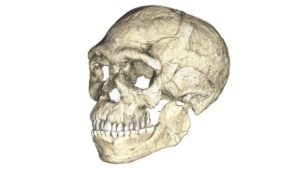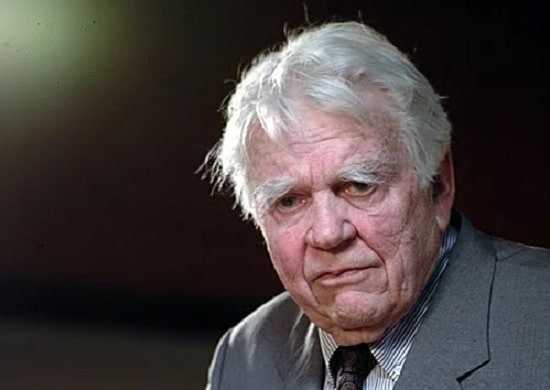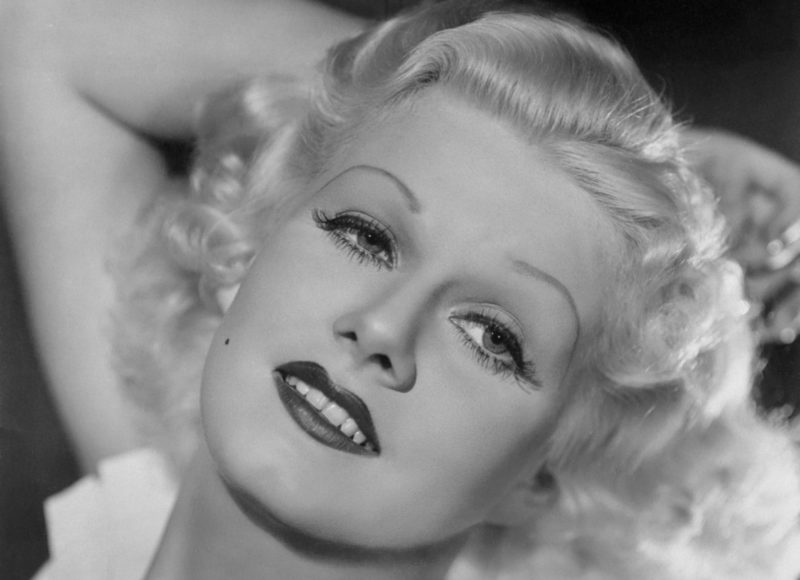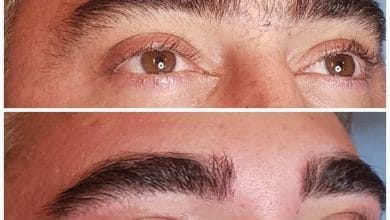The evolutionary secret of eyebrows

• The evolution of the eyebrow and eyebulb reflects the changed communication between the ancestors of man.
• From the point of view of anthropologists, the human brow part alone fulfils social purposes.
• The researchers were able to reject other hypotheses with the help of a computer simulation.
When a British chocolate company published an eyebrow ranking a few years ago, Sean Connery eyebrows was unchallenged in first place. Nobody masters the game with the hairy stripes on his face as perfectly as the Scottish actor.
But Sean Connery’s eyebrows are probably also top from an evolutionary biological point of view. This can be concluded from a paleoanthropological study that has now been published in Nature Ecology & Evolution. According to a team led by Ricard Godinho of the University of York in the UK, the evolution of the eyebrow and eyebrow reflects the altered communication between human ancestors.
Both hypotheses have now been put to the test with a computer simulation.
While early hominids with their enormous bone bulges above the eyes conveyed frightening looks and great assertiveness, modern man with his rather flat forehead and the now highly movable hair strips rather communicates moods and details. Which seems completely plausible, because like Sean Connery eyebrows, most people use their brows extensively for their facial expressions.
However, scientists have so far been unsure whether other driving forces have been decisive for the evolution of eyebrows. This is because other mammals also have eyebrows, although the bulge and brow – unlike all other features on the face – have no obvious physical function. Although Wikipedia says that the raised bars above the eyes have the task of protecting the sensitive sense of sight from torrents of sweat and trickling objects, the eyebrows are not a visible physical feature.
However, two other hypotheses were discussed scientifically. Firstly, the spatial hypothesis that the bone bulges under the hairy stripes in the human face are supposed to solve the problem of the bones of the skull box and face growing at different speeds. Secondly, the biomechanical theory states that the thick ridges above the eye sockets were created in human ancestors to protect the skull from the considerable chewing forces of malmating jaws. Softened by cooking, crushed food later made this stabilisation superfluous.
With the result that no hominins would ever have needed such thick bone bulges in the face to meet the requirements of the spatial or biomechanical hypothesis. According to the scientists, it is also known from research on mandrills that bony structures can form in the face for purely social reasons. The males of the primates possess bone bulges on the right and left side of the nasal bone, which, together with the play of colours of the skin, serve as a means of communication.

From the anthropologists’ point of view, the human brow part also fulfils social purposes alone. The extreme bone bulges of our ancestors initially severely restricted the mobility of the brows and limited their expressiveness to a few, presumably grim facial features. The increasingly complex exchange of information between modern humans later favored the development of more delicate brow parts that communicate many different emotions. Sometimes a look says more than words.








